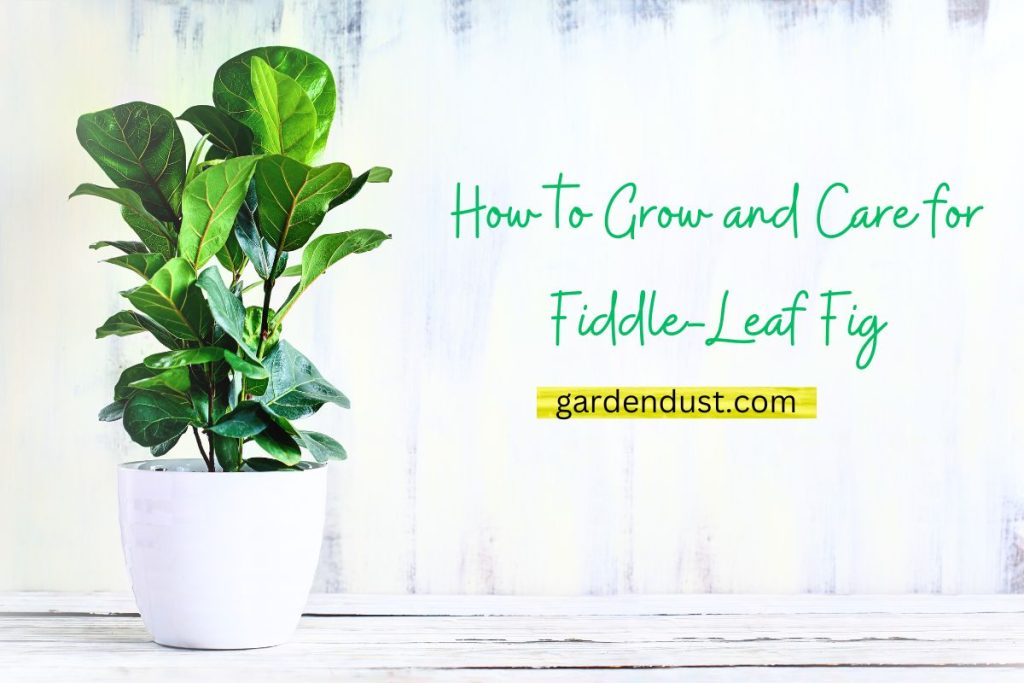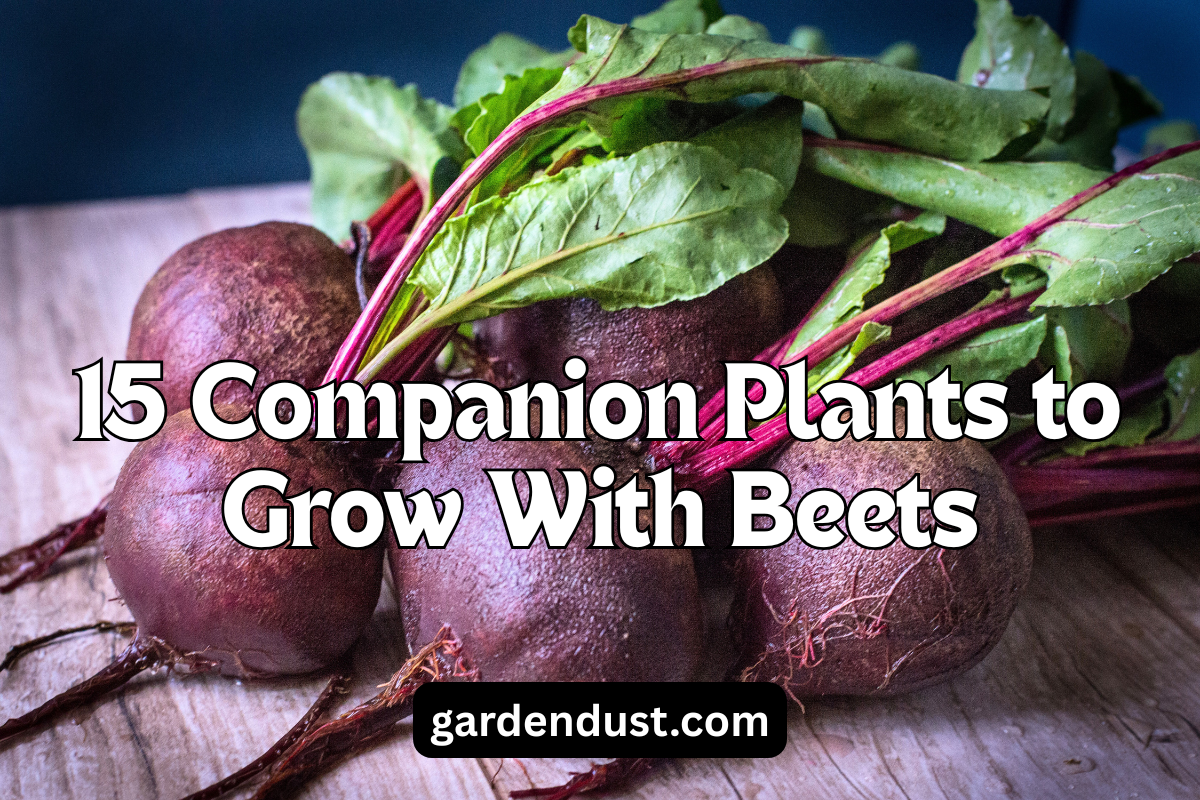The fiddle-leaf fig (Ficus lyrata) is a popular indoor plant that has gained immense popularity for its large, lush leaves and striking appearance. Native to western Africa, this tropical plant has become a favorite among interior decorators and plant enthusiasts alike. However, due to its specific care requirements, cultivating a healthy and vibrant fiddle-leaf fig can be a bit challenging for beginners. In this guide, we will discuss How to Grow and Care for Fiddle-Leaf Fig, ensuring that you have all the knowledge needed to help your plant thrive.
Choosing the Right Location:
Fiddle-leaf figs thrive in bright, indirect sunlight. Choose a spot near a large, filtered window that provides consistent light but avoids direct sunlight, which can scorch the leaves. Avoid placing your fiddle-leaf fig near drafts, heaters, or air conditioning vents, as these can lead to temperature fluctuations that might stress the plant.
Potting and Soil:
When selecting a pot for your fiddle-leaf fig, opt for a container that is only slightly larger than the plant’s current root ball. Using a pot that is too big can lead to overwatering and root rot. A well-draining potting mix is essential for the health of your fiddle-leaf fig. You can create a suitable mix by combining potting soil, perlite, and orchid bark to ensure proper aeration and drainage.
Watering:
Proper watering is crucial for the fiddle-leaf fig’s well-being. Allow the top inch or two of the soil to dry out before watering. Stick your finger into the soil; if it feels dry at that depth, it’s time to water. When watering, provide enough water until it starts draining from the bottom of the pot, but avoid letting the plant sit in standing water, as this can lead to root rot.
Humidity:
Fiddle-leaf figs are native to tropical regions with high humidity. To mimic their natural environment, it’s beneficial to increase the humidity around the plant. You can achieve this by misting the leaves regularly, placing a humidity tray filled with water and pebbles near the plant, or using a room humidifier.
Read Also:-15 Indoor Plants Safe for Cats and Dogs
Pruning and Shaping:
As your fiddle-leaf fig grows, it may become necessary to prune and shape it to maintain its aesthetic appeal. Prune any yellowing or damaged leaves, as well as any growth that seems leggy or disproportionate. To encourage a bushier and fuller appearance, pinch off new growth at the tips of the stems. If you wish to control the height, you can prune the main stem just above a leaf node.
Fertilization:
During the growing season (spring and summer), feed your fiddle-leaf fig with a balanced liquid fertilizer every 4-6 weeks. Dilute the fertilizer to half strength to avoid overfeeding, which can lead to nutrient imbalances.
Repotting:
Fiddle-leaf figs prefer to be slightly root-bound, but eventually, they will outgrow their pots. Repot your plant every 2-3 years or when you notice the roots becoming too crowded. Choose a new pot that is only slightly larger and refresh the potting mix.
Common Issues and Troubleshooting:
- Yellowing Leaves: This can be a sign of overwatering or improper drainage. Adjust your watering routine and ensure the pot has proper drainage holes.
- Brown Spots: Brown spots on the leaves can result from underwatering, low humidity, or exposure to cold drafts. Ensure consistent watering and maintain a humid environment.
- Drooping Leaves: If the leaves are drooping, it could indicate underwatering or overwatering. Check the moisture level of the soil and adjust your watering accordingly.
- Dusty Leaves: Dust can accumulate on the large leaves of the fiddle-leaf fig, hindering its ability to photosynthesize. Wipe the leaves gently with a damp cloth to keep them clean and allow better light absorption.
Propagation
Propagating a fiddle-leaf fig (Ficus lyrata) can be an exciting way to expand your collection or share the beauty of this plant with others. There are a few methods you can use to propagate fiddle-leaf figs, including stem cuttings and air layering. Let’s explore these propagation techniques in detail:
Stem Cuttings:
Stem cuttings are a popular and relatively straightforward method of propagating fiddle-leaf figs. Here’s how to do it:
- Choose a Healthy Parent Plant: Select a healthy fiddle-leaf fig with strong stems and leaves for your cuttings. This will increase the chances of successful propagation.
- Prepare Your Tools: You’ll need a sharp, clean pair of pruning shears, a small container filled with a well-draining propagation mix (a mix of peat moss, perlite, and vermiculite works well), and a rooting hormone (optional but can aid in root development).
- Take Cuttings: Identify a healthy stem with several leaves on it. Make a clean cut just below a node (the point where a leaf is attached to the stem). The cutting should ideally be around 6-8 inches in length.
- Remove Excess Leaves: Trim off any leaves from the lower half of the cutting. This will help reduce moisture loss and encourage root development.
- Apply Rooting Hormone: If using rooting hormone, dip the cut end of the stem into the hormone according to the product instructions. This can help stimulate root growth.
- Plant the Cutting: Insert the cut end of the stem into the prepared propagation mix. Make sure at least one node is buried in the mix. Gently firm the mix around the stem to provide support.
- Create a Mini Greenhouse: You can create a mini greenhouse effect by placing a clear plastic bag or a plastic dome over the cutting. This helps retain humidity and encourages root growth.
- Provide Indirect Light: Place the cutting in a location with bright, indirect light. Avoid direct sunlight, as it can stress the cutting.
- Monitor and Water: Keep an eye on the cutting’s moisture level. Water it when the top inch of the propagation mix feels dry. Be careful not to overwater, as excessive moisture can lead to rot.
- Transplanting: After a few weeks to a couple of months, you should start to see new growth and roots forming. Once the cutting has established a healthy root system, you can transplant it into a slightly larger pot with regular fiddle-leaf fig care.
Air Layering:
Air layering is another propagation method that involves encouraging a stem to grow roots while it’s still attached to the parent plant. This technique is more advanced and requires more time and patience:
- Select a Stem: Choose a healthy stem on the fiddle-leaf fig that you want to propagate. It’s best to select a stem that is relatively horizontal and has several nodes along its length.
- Make an Incision: About a third of the way into the stem, make a small incision with a clean and sharp knife. This incision should be deep enough to expose the inner tissue of the stem.
- Apply Rooting Hormone: Dust the exposed area with rooting hormone to stimulate root growth.
- Wrap with Moist Moss: Wrap the exposed portion of the stem with damp sphagnum moss. This will help retain moisture and encourage root development.
- Wrap with Plastic Wrap: Wrap the moss-covered section with plastic wrap to hold the moisture in place.
- Wait for Roots: Over the course of several weeks to a few months, roots should start to form within the moss.
- Cut and Transplant: Once you see a sufficient amount of root growth, carefully cut the rooted portion of the stem just below the moss-covered area. Plant the rooted stem in a pot with well-draining soil.
Growing and caring for a fiddle-leaf fig can be incredibly rewarding, but it requires attention to detail and a willingness to adapt to the plant’s specific needs. By providing the right amount of light, water, humidity, and proper care, you can create an ideal environment for your fiddle-leaf fig to flourish. Remember that every plant is unique, so closely observe your plant’s response to your care routine and make adjustments as needed. With patience and dedication, you can enjoy the beauty and elegance of this stunning tropical plant in your indoor space. Happy Gardening…







